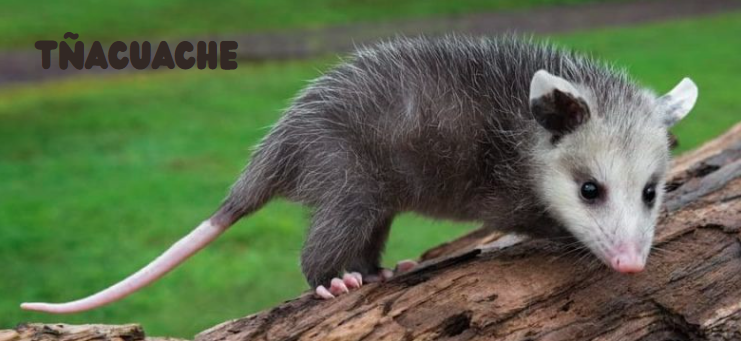Tñacuache: The Fascinating Creature You Didn’t Know About
The term “tñacuache” refers to a medium-sized mammal commonly known as the opossum. This unique animal is primarily found in the Americas, and while it may not receive the same attention as other wildlife, it plays a crucial role in the ecosystem.
In the United States, especially in areas with diverse wildlife, people may encounter a tñacuache in suburban backyards or rural landscapes. This article will dive deep into understanding the tñacuache, its behavior, and why it’s essential to appreciate this often-overlooked creature.
What is a Tñacuache?
The tñacuache (commonly referred to as an opossum in English-speaking regions) is a marsupial, meaning it carries and nurses its young in a pouch, much like kangaroos. It belongs to the order Didelphimorphia, with the Virginia opossum (Didelphis virginiana) being the most widely recognized species in the United States. Although often mistaken for rodents, tñacuaches are marsupials, which makes them quite distinct from the average backyard critter.
Physical Characteristics of the Tñacuache
A fully grown tñacuache typically weighs between 4 and 12 pounds, with a body length ranging from 15 to 20 inches, excluding its long, prehensile tail. The tail itself serves many functions, including grasping branches and carrying materials to build nests. Its fur is usually a mix of grayish-white and black, with coarse textures. Despite their somewhat scruffy appearance, they are well adapted to a wide range of environments.
- Weight: 4 to 12 pounds
- Body length (excluding tail): 15 to 20 inches
- Tail: Long and prehensile, used for grasping and balance
One of the tñacuache’s most distinguishing features is its ability to “play dead” when threatened, which is a defense mechanism known as thanatosis. When faced with a predator, the tñacuache collapses, appears lifeless, and emits a foul odor to deter any potential threats. This unique tactic has contributed to the species’ survival across centuries.
Habitat and Distribution
Tñacuaches are highly adaptable creatures, thriving in various environments, from dense forests to suburban backyards. While they prefer moist, wooded areas with access to water, they are known for their remarkable ability to live near humans, often rummaging through trash bins in search of food. Their native range stretches from Canada, through the United States, and down to Central and South America.
In the United States, tñacuaches are commonly seen in the Southeast, Northeast, and Midwest regions. Their ability to adapt to different climates, from humid subtropics to cooler temperate zones, has allowed them to expand their range over the years.
Tñacuache Behavior and Social Structure
Tñacuaches are nocturnal, meaning they are most active at night. They are solitary animals, generally preferring to live and forage alone. Unlike other mammals, tñacuaches do not build permanent nests or burrows. Instead, they occupy temporary shelters like hollow logs, abandoned burrows, or even attics and sheds.
One of the tñacuache’s most notable traits is its omnivorous diet. They eat almost anything, from fruits and vegetables to insects and small animals. Their scavenging nature has made them vital in controlling insect populations and reducing waste, as they consume a wide variety of organic matter. In urban areas, tñacuaches are known to feed on leftover food, further emphasizing their adaptability.
- Diet: Omnivorous (fruits, insects, small animals, carrion)
- Activity: Nocturnal
- Social structure: Solitary
The Ecological Role of Tñacuache
Despite their reputation as pests, tñacuaches play an essential role in the environment. As scavengers, they help clean up ecosystems by feeding on carrion (dead animals) and organic waste, reducing the spread of disease. Additionally, they help control insect populations, including harmful pests like ticks, mosquitoes, and cockroaches. In fact, tñacuaches are known to consume up to 95% of ticks they encounter, making them invaluable in the fight against Lyme disease.
Moreover, their presence in the food chain makes them prey for a variety of predators, including coyotes, bobcats, and large birds of prey. This balance is crucial to maintaining the health of ecosystems across the Americas.
Common Misconceptions About Tñacuaches
There are many misconceptions surrounding the tñacuache, often leading to an unfair negative image of the animal. Some people believe they are aggressive, dirty, or disease-ridden, but these assumptions are largely unfounded. Below, we debunk some of the most common myths:
- Myth 1: Tñacuaches are dangerous to humans.
- Fact: Tñacuaches are generally shy and non-aggressive. They may hiss or show their teeth when threatened, but they are unlikely to attack unless provoked. Their natural defense mechanism is to flee or “play dead,” not to confront.
- Myth 2: Tñacuaches are carriers of rabies.
- Fact: While any mammal can technically contract rabies, tñacuaches are highly resistant to the disease due to their lower body temperature. It’s very rare for them to carry or transmit rabies.
- Myth 3: Tñacuaches are dirty and spread disease.
- Fact: Tñacuaches are actually clean animals that groom themselves regularly, much like cats. While they may occasionally rummage through garbage, they do not inherently carry more diseases than other wild animals.
Tñacuache and Human Interaction
Tñacuaches have a complex relationship with humans. In some areas, they are considered pests because they raid trash cans and gardens. However, they are also beneficial because they reduce the number of ticks and other pests in their habitats. Understanding their behavior and value can help foster a more positive coexistence between humans and tñacuaches.
If you encounter a tñacuache in your yard, it’s important to remember that they pose little threat. In fact, having them around could help naturally control the insect population in your area.
Conservation Status
Currently, the tñacuache is not considered endangered or threatened. Their adaptability has allowed them to thrive in many different environments, including urban areas. However, habitat destruction and urban sprawl can pose challenges for their populations in some regions.
Additionally, tñacuaches are often victims of road accidents, as their nocturnal habits bring them into contact with vehicles. Conservation efforts for tñacuaches primarily focus on protecting their habitats and raising awareness about their ecological importance.
Tñacuache in Culture and Folklore
The tñacuache holds a special place in the folklore of various indigenous cultures throughout the Americas. In some Mesoamerican traditions, the tñacuache is seen as a trickster figure, known for its cleverness and adaptability. In Mexican culture, for instance, the animal has been featured in various folk tales and legends, symbolizing resourcefulness and survival.
In modern times, the tñacuache is often overlooked in popular culture. However, its role in mythology and its ecological contributions deserve greater recognition.
Why Should You Care About the Tñacuache?
At first glance, the tñacuache might not seem like an animal worth much attention. However, their presence in ecosystems and urban environments provides numerous benefits. From controlling pests to cleaning up waste, tñacuaches are nature’s janitors, playing a crucial role in maintaining balance in the animal kingdom.
Understanding and appreciating the tñacuache is not just about recognizing its unique traits but also about acknowledging its contributions to the broader ecosystem.
FAQs About Tñacuache
Q1: Are tñacuaches dangerous to pets?
A: Tñacuaches are generally non-aggressive and prefer to avoid conflict with pets. If a pet threatens a tñacuache, the animal is more likely to play dead or run away than to fight back. However, like any wild animal, tñacuaches should be observed from a distance to prevent any unnecessary interaction.
Q2: What do tñacuaches eat?
A: Tñacuaches are omnivores, meaning they eat a wide variety of foods, including fruits, insects, small animals, and carrion. In urban areas, they may also scavenge in trash bins for food scraps.
Q3: How do tñacuaches help control tick populations?
A: Tñacuaches are known to groom themselves frequently, and in the process, they consume up to 95% of the ticks that attach to them. This helps reduce the number of ticks in the environment, which can potentially lower the risk of tick-borne diseases like Lyme disease.
Q4: Can tñacuaches climb?
A: Yes, tñacuaches are excellent climbers. They use their prehensile tail to grasp branches and maintain balance, allowing them to climb trees and navigate through various terrains.
Q5: Why do tñacuaches play dead?
A: Playing dead, or thanatosis, is a defense mechanism that tñacuaches use to deter predators. When they feel threatened, they collapse, appear lifeless, and emit a foul odor to convince predators that they are not worth eating.
Conclusion
In conclusion, the tñacuache may not be the most glamorous or popular animal, but its importance cannot be overstated. From its unique behaviors to its role in maintaining ecological balance, the tñacuache is a fascinating creature that deserves more recognition and respect.
Understanding the tñacuache allows us to appreciate the delicate interconnectedness of nature and the vital role that even the most overlooked animals play in it.






